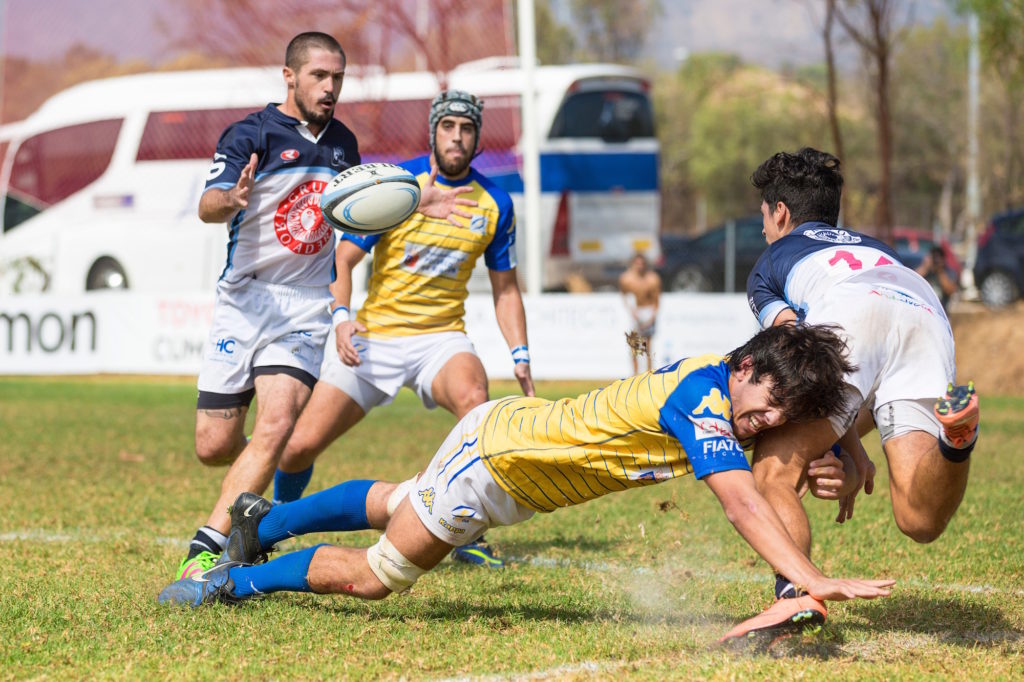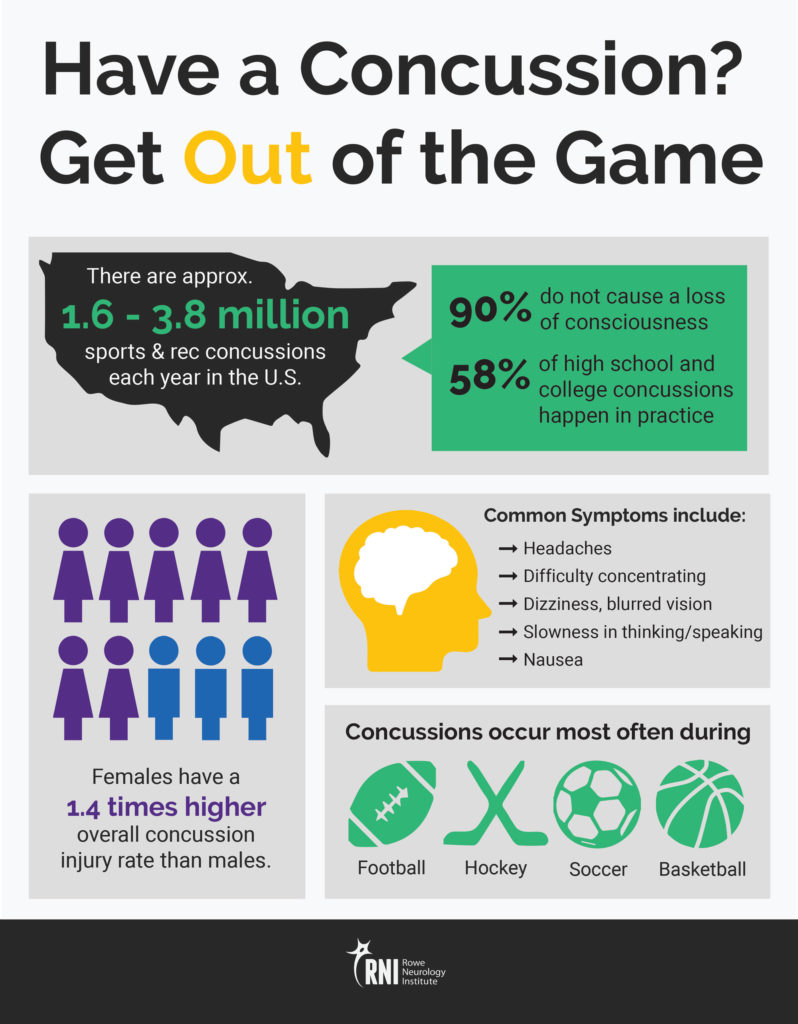
Love them or hate them, sports are everywhere. Youth, high school, college, recreational, professional — in the US there is no shortage of ways to play. Participating in a sports league yields many benefits such as an improved fitness and health level, boosted self-esteem, better sleep quality, reduced stress rates, stronger leadership skills – not to mention it’s just plain fun.
But, with the benefits also comes an inevitable risk of injuries. And since we are in the field of Neurology, we have a spent a lot of time looking at one sports injury in particular — concussions. The Concussion was pushed into the sports injury spotlight by its high prevalence in the NFL. Every Sunday we watch NFL stars sidelined by a concussion, followed by days of waiting to see if they have passed “concussion protocol”. Professional football may be where we hear the most about concussions, but athletes of other sports and competition levels, are by no means exempt. The Center for Disease Control estimates anywhere between 1.6 to 3.8 million sports and recreational traumatic brain injuries each year. Furthermore, approximately 5-10% of athletes will experience a concussion in any given sports season. Thus, the question becomes not if a concussion will happen, but rather what to do when it does.
What is a Concussion?
A concussion is a medical term for a trauma to the brain caused by forces to the head that result in temporary loss of normal brain function. The brain trauma occurs when the skull stops moving suddenly, and the soft brain tissue basically “sloshes” against the inside of the skull. With that trauma, there is a massive release of the neurotransmitter glutamate. The brain can not work properly until that glutamate is disposed of. This glutamate release happens due to a process called “mechanoporation,” where the channels that keep ions separated in the nerve cells of our nervous system get damaged and cause overfiring of those electrical cells.
The Numbers: What We Know About Concussions in Sports
You don’t have to lose consciousness to have a concussion. In fact, approximately 90% of concussions do not result in the loss of consciousness.
They don’t just happen in football. The sports with the highest concussion injury rate are football, Hockey, Soccer, Lacrosse, basketball, rugby, and baseball/softball.
Concussions are not reserved for game time, they happen in practice too. In a study by JAMA Pediatrics, they found that for youth sports, 46% of concussions happened during practice, while in high school and college, 58 % occurred during practices.
Females are more at risk. Comparing sports that both genders play, women have a concussion injury rate 1.4 times higher than men. There are several explanations for this with the most common theories being their neck structure and greater peak head and neck angular acceleration.
The Warning Signs May Not Be Immediate. Some people will experience concussion symptoms immediately following the head trauma. But for many, it could take hours to days for symptoms to manifest.
Do I have a concussion? The symptoms to look for when diagnosing a concussion
Whether you’re an athlete, coach or parent of an athlete, when there is an impact to the head, it’s crucial to know the concussion warning signs.
Common symptoms of concussion involve the functions of those areas of the brain most vulnerable to mechanical trauma. So it’s no surprise that vision (integrated in the occipital poles, or the very rearmost parts of the brain), dizziness (caused by trauma to areas of the brain that integrate balance, including the inner ear, brain stem, and cerebellar structures in the lower part of the brain), memory (initially formed in the middle temporal lobes and surrounding structures) and sometimes consciousness (mediated by structures deep in the brain comprising the reticular activating system) are disturbed to varying degrees as the brain goes sloshing back and forth in the skull.
The most serious problems relating to mechanical trauma to the head can happen even later, as in a half hour to hours and days after the initial impact. These are due to hemorrhage into or around the brain, due to the rupture of arteries (which bleed and form clots relatively quickly, within the first hour) or veins (which can form clots over days or weeks.) The arteries themselves can be damaged because of so-called “dissection,” and this can cause a stroke where an artery gets stopped up, just as in non-athletic injuries. The neck and spinal cord can also be damaged, and these cause their own separate set of problems, as does the back.
I have a Concussion, what do I do?
Stop playing, right away. Any athlete who suffers even a mild concussion should be taken out of the game or practice immediately, and should not return to play until evaluated by a licensed health care professional.
There are several sideline exams that are supposed to test whether an athlete can return to play in that game. None are perfect, however, and we believe it’s a safe rule always to remove the athlete from any kind of contact play until he or she is examined by a healthcare professional. The second injury, suffered when the athlete is in a suboptimal performance mode, is frequently much more serious than the first one, simply because the athlete is more vulnerable.
Just as every person is unique, so is every concussion. Because of this, the treatment and recovery for a concussion is very specific to each case. When we see concussion patients an RNI, we assess how a person reacted to the impact as well as how quickly they return to their normal state. We recommend rest to help in recovering, though recent data shows that rest really has no predictive value in determining when a concussed athlete is fully recovered. But, I recommend it anyway because it just makes sense.
Above all, remember this: Most athletes participating in contact sports will make their living in some career that does not involve the sport they are playing. As Hans and Franz used to say in the famous Saturday Night Live skit, “Hear me now and believe me later”. If you suffer concussions in practice or games, take yourself out of the game. Nobody cares as much as you do about your brain.
If you have experienced a trauma to the head and suspect you may be suffering from a concussion, we can help. Make an appointment at RNI to have our team assess we can help in assessing your reaction and determine when you have returned to normal.
Additional Information about Concussions
A recent article in the NYTimes discusses efforts to reduce the incidence of concussions in young athletes. For the National Athletic Trainers’ Association analysis and recommendations see their position statement.
For a great video showing what happens to the brain during impacts, and the studies using helmet sensors, go to the Scientific American site.
Here is the TV interview of our very own Dr. Rowe with Dr. Jackson speaking about sports concussions on Good Sports TV
